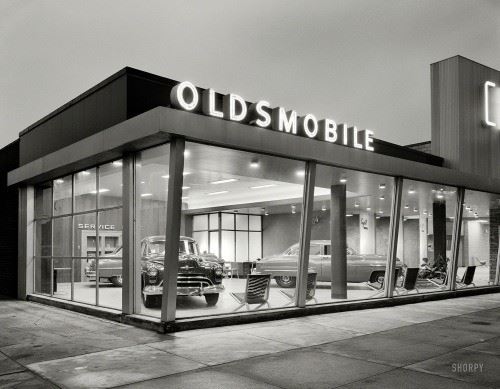This post is authored by Elaine Robinson, Senior Architectural Historian with Commonwealth Heritage Group in Dexter, Michigan.
When I entered the world of Cultural Resource Management as an architectural historian, the fifty-year guideline (I refuse to call it a rule) was at about 1945. The guideline is part of the standards used to determine which cultural resources are eligible for listing in the National Register of Historic Places. Also considered are the four Criteria for Evaluation (association with events, persons, architecture, or likely to yield important information about the past) and the seven aspects of integrity (location, design, setting, materials, workmanship, feeling, and association). Looking back, I realize how convenient that was for historians. For the most part, the industry was still using the end of World War II as the cut-off for survey and documentation. Style guides and architectural books all covered the entire gamut of defined styles (the issue of vernacular forms is an entirely different issue…best saved for another time) that we were required to review. These resource books include names of every tiny feature, from acanthus to water table.
However, as time passes, and the date of construction for resources to be surveyed extends into the late 1960s, the reliable style guides are less likely to cover relevant styles, or even provide names for features that have to be described by the historian. Some of the style guides do offer vague discussions of architectural styles after 1945, but these are often lumped into a single category of “contemporary” or include resources that may not fit into individual State Historic Preservation Office (SHPO)’s standards for a time period. And, even if style guides do include information you could use, getting the SHPO to recognize some of the terms can be more challenging than can be addressed in a single post. Consider the “wounded dove” roof form as mentioned in the 2013 A Field Guide to American Houses by Virginia McAlester.
Some training sessions on the styles of buildings of the mid-twentieth century do exist, such as the National Preservation Institute seminar “The Recent Past: Strategies for Evaluation.” Unfortunately, this seminar is not offered often and can be cost prohibitive. This can lead to making up terms for architectural features, like my personal one of “fixed hopper” to reference windows in mid-century buildings that are placed at an angle that echoes an open hopper window. Or having to use full paragraphs to describe an individually important feature.

“Fixed Hopper” windows extend across the front of the 1950 Crystal Motors, 5901 Bay Parkway, Brooklyn, New York (photo by Samuel H. Gottscho).
It seems like it is time for another style guide. One that covers architectural features that dominated the twentieth century, from curtain walls to prow roof lines and beyond. As historians who are documenting twentieth-century buildings, please tell us about your experiences, the names you have used for architectural details, or resource materials that would benefit others!
